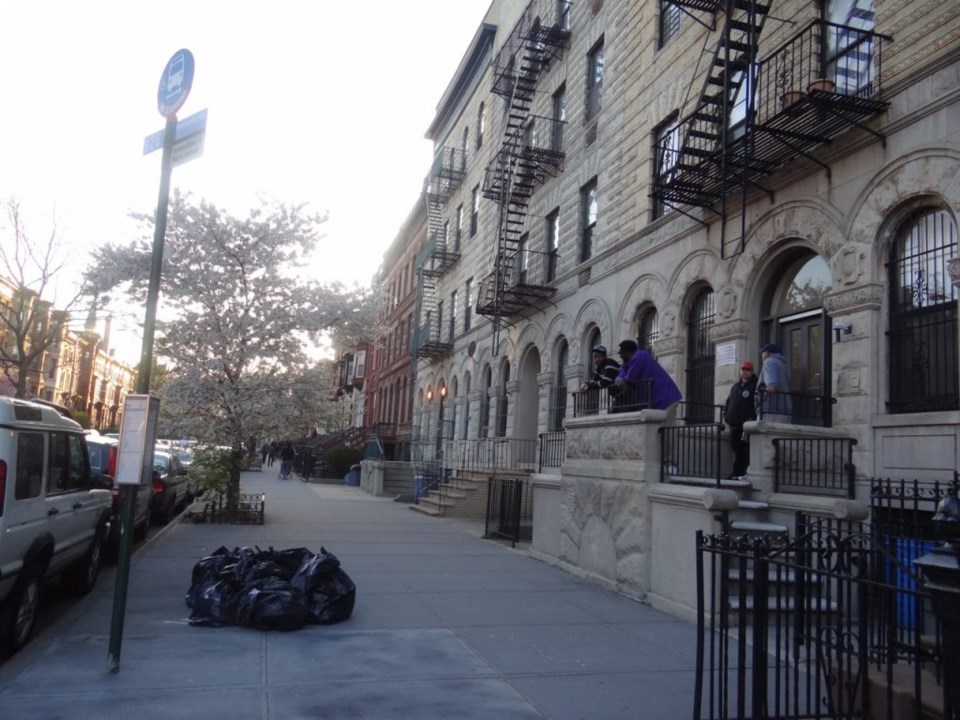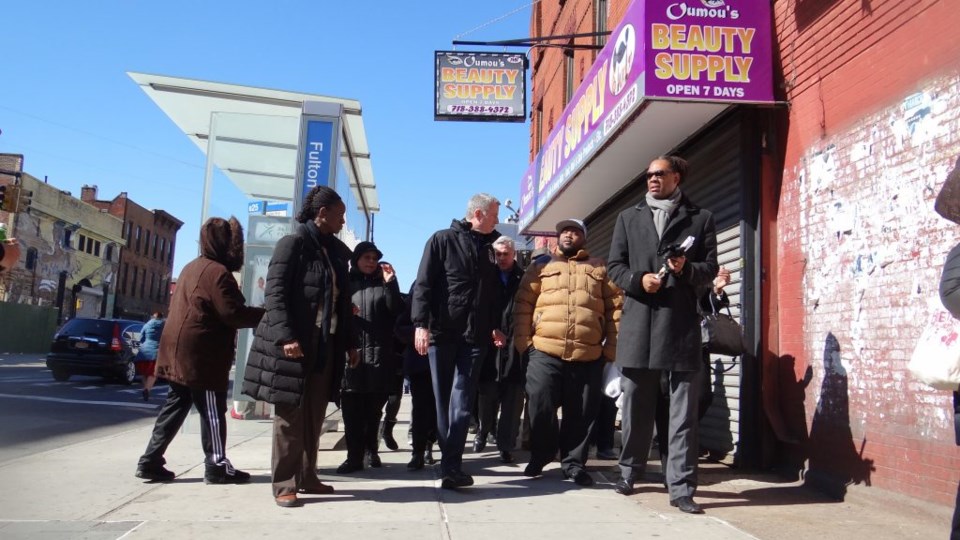
In Brooklyn, the rent is too damn high!
Let's give a warm "thank you" to Jimmy McMillan for publicly declaring it first, because really, there is no more graceful way to put it.
One-third of New York City renters spend more than half of their income on housing. In Brooklyn the problem of rising rents has had a particularly devastating impact, as unrelenting housing development continues to spread across the borough week after week, pushing its longtime residents further and further outside of the borough's borders.
"When you have 'affordable rents' going for $3,000, $4,000 that's not affordable for me," said Sherice Coleman, 35, a Bed-Stuy native. Coleman says she is ready to move out of her current residence, which also has become unaffordable, but she hasn't found any options that would allow her to stay in Brooklyn.
So, what is Mayor Bill de Blasio doing to stop this vicious trend?
The hazy and uncomfortable truth is, he's trying. The question of whether he's trying hard enough Well, you decide.
Here are the facts, distilled down to the basics:
- In 2012, as a part of his New York City Housing Plan, the mayor promised to create and preserve 200,000 affordable housing units in ten years.
- Part of this plan included rezoning parts of the city to encourage more residential development. To date, the City has financed 40,204 affordable apartments, including the largest number of new affordable apartments underway during any year since the City's housing department was founded 38 years ago.
However, across all five boroughs, residents complained, developers were not setting aside the numbers of affordable units they were promising, and, furthermore, what they were listing as "affordable" far exceeded the 30-percent-of-income levels of the local residents.
The problem was that, up until recently, New York City has had a voluntary inclusionary housing program that encouraged but made it optional for developers to build affordable housing.
- So in September 2015, under proposed zoning rules, the mayor announced that developers that want to build in certain areas of New York City for the first time would be required to set aside at least 25 percent of their units for lower-income residents. The plan, known as Mandatory Inclusionary Housing (MIH), would start in East New York, giving developers the green light to build taller buildings with more density. Also included was an affordability rubric that outlined low-income pricing options, in accordance with New York City area's median income.
- Then, in December 2015, a report released by New York City Comptroller Scott Stringer found that the "affordable" units in the newly zoned area of East New York, Brooklyn, by the City's own standards, would be too expensive for 55 percent of the neighborhood's current residents. Once the rezoning and development was completed, the study found that the mayor's plan would potentially displace close to 50,000 of its current residents.
The Comptroller urged the City to "amend the current proposal and chart an alternate course," one that abandons the one-size-fits-all approach to rezoning based off a citywide standard and instead takes into full account the income levels of each local community.
- The mayor's office revisited their plan and introduced an amended one. Developed in collaboration with residents, stakeholders and elected officials, on February 24, 2016, the City Planning Commission approved the East New York Community Plan Rezoning Proposal with 12 in favor, 1 opposed, and 0 abstentions.
- The mayor's office also amended the MIH with a new affordability rubric, providing three, more aggressive options, which you can read here. Also added was a plan called Zoning for Quality and Affordability (ZQA). The ZQA makes a long list of changes to the NYC Zoning Resolution, such as allowing buildings with affordable or senior housing to be taller, eliminating parking requirements for affordable or affordable senior housing that is located near subway lines, and changing rules which affect the shape of new and enlarged buildings.
The changes in both plans aimed at providing more incentives for developers to work with the city around the creation of more affordable housing. However, housing advocates, elected officials and community board members remain divided on parts of both plans-- primarily because they feel the mayor's mandate for affordability to developers still does not go deep enough.
- Public hearings were held on the MIH and ZQA proposals February 9 and 10, 2016, where alternative/suggested plans for new affordable housing measurements were submitted by various city government agencies, including the comptroller's office, the office of the public advocate and the office of the Brooklyn Borough President. The mayor's office has yet to endorse any of the alternative plans, and the city council will have to vote on them both soon.
So, what's behind the city's resistance to matching each local district's affordability index? It turns out mandating private business owners make deep discount on their "products" may not be so simple... or legal.
"New York City is trying something extraordinary right now," said a senior city council staffer, on anonymity. "There's no municipality in the country that has a mandatory program of this scope. This will be the first. So what the mayor is attempting really is huge."

According to the staffer, unlike building on city-own, public property, with private property, there are presumed limitations around how much you can mandate, before developers begin claiming that it's a "taking of their property."
"The truth is, there's a limit on the levels the mayor can propose that are economically feasible and that can withstand a legal challenge," the staffer added. "So we may not get everything in this scope."
In effort to offset the not-so-affordable nature of new housing development, de Blasio has added several other tools to his housing plan aimed at helping residents avoid eviction, including free legal services for people if they feel they are the victim of illegal harassment by their current landlord.
However, residents are complaining, what if they do want to move? The problem is, even if they decide they want to move elsewhere in the borough, fewer and fewer housing options make sense for their income.
Four years ago, Mayor Bill de Blasio promised New York City residents 200,000 affordable housing units over the next ten years. Given the urgency of the issue, is he pushing hard enough to make good on that promise, even if the units are only affordable(ish) or simply affordable to some?
On the other hand, given the groundbreaking nature of his mandatory inclusionary housing plan, perhaps a more measured approach to collaboration between the city and private developers should be the overarching goal. In other words, will pushing harder for deeper mandates this early on in the planning risk making "perfect" the enemy of "good?"



